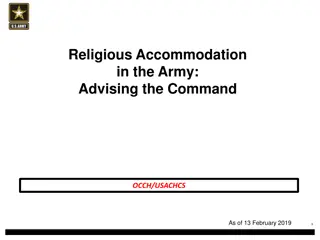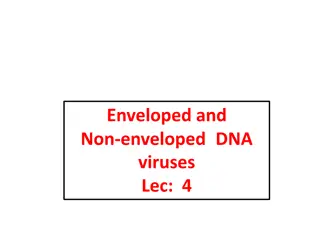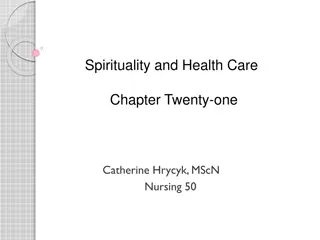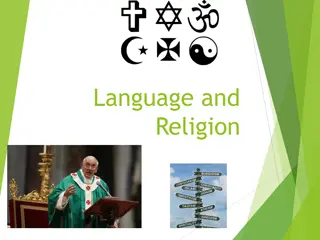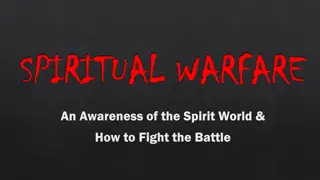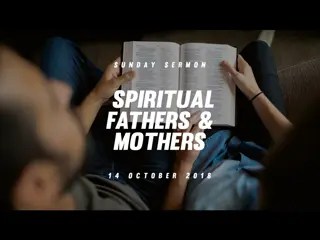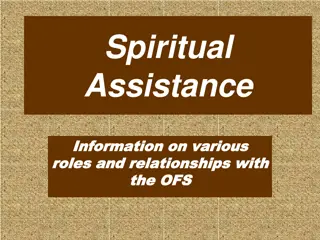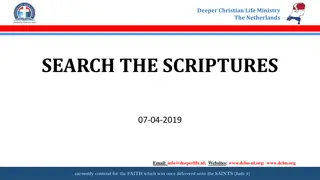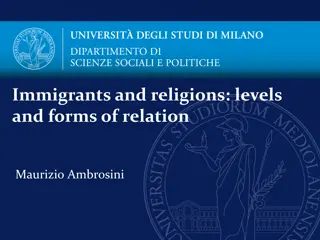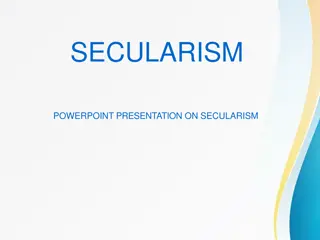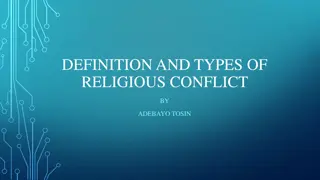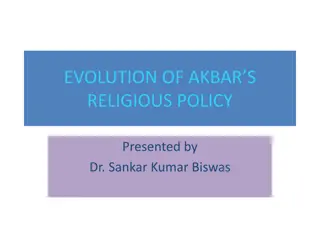Recognizing and Overcoming Spiritual Viruses in Religious Life
Explore the insidious spiritual viruses affecting religious life, from the virus of nostalgia to the virus of lethargy. Reflect on issues like clericalism, self-referentiality, pessimism, activism, and more, hindering personal growth and communal well-being in religious communities.
Download Presentation

Please find below an Image/Link to download the presentation.
The content on the website is provided AS IS for your information and personal use only. It may not be sold, licensed, or shared on other websites without obtaining consent from the author. Download presentation by click this link. If you encounter any issues during the download, it is possible that the publisher has removed the file from their server.
E N D
Presentation Transcript
SPIRITUAL VIRUSES IN RELIGIOUS LIFE
The virus of nostalgia: We are enthralled by the past when there was an abundance of vocations and we were in a period of expansion, we had social recognition. The renewal of consecrated life coincides, in reality, with the growing decline in numbers in the northern hemisphere. We have gained in the clarification of identity, spirituality, mission, location within the people of Gods. Nostalgia also works on a personal level: I used to be more capable, I concentrated better, I had more resilience to adversity.
The virus of clericalism: Giving excessive importance to the position, prestige and power in the community of our brothers; the need for affiliation and status prevails over personal freedom and equality. What each one does or has done is more important than fraternal relationships. Fundamentally, justification by works, by what each one does, yields, grows. This does not mean that works do not have much importance as the fruit of love and commitment.
The virus of selfie: The Pope often speaks of self-referentiality. One's own image and fame and prestige is, in practice, more important than the glory of God. There are forms of collective affirmation, of publicity of one's own works and congregational achievements that have to do with this. The truth is that from the personal point of view this "spiritual worldliness" also takes place. We are in danger of worshipping our own image. We worry about not making mistakes, about not making the wrong decisions, so nobody can reproach us.
The virus of pessimism: This is about a negative and hopeless view about the situation of the Church and society. One has the impression that everything is in decline, that the past was much better... that this is ending and heading toward failure. The joyful hope in the presence and promises of the God of history is not sufficiently exercised. We listen more to the prophets of calamity than the prophets of hope.
The virus of activism: It can manifest itself in the life of the fraternity as well as in pastoral life. The volume of tasks is so great that they end up wearing down people who have no pause for a life of prayer and communion. But beware, this activism can be an escape from one's own life, it can be a way of reacting to disillusionment, to one's own loneliness...
The virus of lethargy: One has lost the sensitivity to react. One has stopped being like a sponge and has become like a dry cork. We do not allow ourselves to be affected by the newness of the Gospel. Nor by the surprises of personal and relational life. These days (Christmas 2017), in the streets of Madrid you can see advertisements with the inscription: awaken the senses. The entire task: to awaken the capacity to listen, to see, to feel... And also, to believe, to expect, to love.
The virus of negative criticism: Murmuring feeds on envy and jealousy, mocks other s fame; it does not worry about knowing and transmitting the truth, it projects negative images of people after an error is committed. We label, which, repeated, and repeated, hem in the life of the person; we waste the creative energy that is expressed in recognition, praise, confirmation, gratitude...
The virus of superficial communication: Conventional language characteristic of rituals and formal education is used. Communication can reach a second level: exchange of information and opinions. We talk and argue about sport, news and political positions. But what relates to life and personal feelings, to relationships, about faith and hope remains out in the shadows.
The virus of individualism: The personal life project prevails over the communal charismatic project; the personal mission is disconnected from the communal mission. Individual convictions and interests do not allow themselves to be shaped by the charism of the congregational group.
The virus of mere survival: When this virus has infected the congregational body, the vocational discernment and formative requirements proper to the lifestyle in fraternity, are lessened. The vision of the challenges of the future is lost, and inertia and routine prevail.
The virus of resistance to change: It takes many forms, change regarding apostolic works and activities, but also regarding the attitude of personal conversion on the moral and affective level. It can take the form of a certain blindness to see the cultural and social transformations that are demanding new ways of living and witnessing to the good news of the Gospel. No effort is made to go beyond what is safe, what is known, what is customary. New initiatives have the weight of having to justify themselves. And it is a great weight.
AND Four dimensions or perspectives of reality RELIGIOUS LIFE? THE EGO-THE IT The personal exterior THE BEHAVIORAL or OBJECTIVE THE EGO The personal interior THE INTENTIONAL or SUBJECTIVE the material body, the very nature of the organism and the brain thoughts, emotions, memory, perceptions, sensations, conscience, or mental states THE EGO-YOU=(WE) The collective interior THE CULTURAL or INTER-SUBJECTIVE THE IT The collective exterior THE SOCIAL or INTER-OBJECTIVE the social, structures, systems the economic, politic, environment Culture and cosmovision, values, meanings Source: Ken Wilber, La visi n integral (2007) Table elaborated by Feliciano Rodr guez Dom nguez, taking in account various illustrations by K. Wilber
WHAT ARE THE ANTIDOTES? WHAT ARE THE ANTIDOTES? Are there any in your Congregation? Where do they come from? How are they transformed? What is the influence of cultures? What is the role of authority? Share an experience








